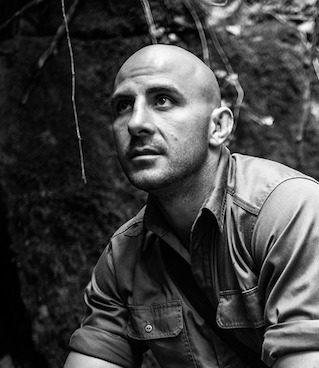What is your background?
I grew up in Australia and studied law at a university, so ending up as a photographer based in Africa was a bit unexpected. But I traveled to Africa for the first time when I was six with my parents and fell in love. Over the years, I came back as often as I could, and once I started taking photographs the stories that can be told here were just too exciting to stay away from. So when I got the chance I stayed, and I don’t think there are many professions that are more rewarding than being a photographer in this extraordinary place.
What kind of photography do you most identify with?
I identify less with a particular style than I do with storytelling. If a photograph tells a great story, it doesn’t matter if it’s fine art, reportage, portraiture or any other genre.
Explain your style in 100 words
I try to tell a story with every photograph that I take. I love taking portraits because they’re a very effective way to tell people’s stories, so that has influenced the way that I shoot wildlife as well. I’ve found that I get some very interesting results using portrait lenses to shoot wildlife, and using photographs to tell broader stories can be a very powerful way to start a discussion and stimulate change.
What photograph left a lasting impression on you and why?
Yousuf Karsh’s portrait of Winston Churchill. The story behind it – of Karsh having the audacity as a young photographer to remove Churchill’s cigar – will always inspire me. The photograph itself is obviously remarkable, and Karsh is a photographer who I continue to look up to.
When did you discover your passion for photography?
On one of my early trips to Africa, my dad let me take his film camera with me – as long as I read the manual first. I read the instructions on the plane and fell in love with photography on that trip. From that point on there was no way I was going to do anything else.
What would you do without photography?
Photography is the one thing that keeps me truly relaxed and happy. I can’t imagine life without it.
How do you know when a body of work is finished?
I don’t begin a body of work without first identifying what the story is that I want to tell. I go into shoots or start projects with a purpose in mind. Obviously, circumstances and conditions on the ground will change and you have to be able to adapt, but having a clear idea of what you need before you start helps you to make those changes effectively. It also means that I have a measure of when something is complete and I have what I need for a project.
Is there one photograph of yours that you are very proud of? Why?
Choosing a single photograph is difficult. It’s hard to compare subjects and stories, as different shoots are important in their own ways. But one of the most memorable moments of my career has to be photographing Nelson Mandela. Madiba has been my hero since I was a child, and by the time I was in a position to meet and photograph him he had retired from public life. I was incredibly fortunate when he agreed to let me visit him at his home – with my camera. Over the course of several visits, I ended up taking the photograph that was his last official photographic portrait. It was a huge moment for me, one that I will never forget.
What was your first camera?
My dad’s camera that I took on that trip to Africa – a Nikon FM2.
What role does the photographer have in society?
Photographers have enormous power to tell stories and to create change. Very few people in the world have seen a killer whale in real life, but we know what they look like, marvel at their beauty and care about their existence because we’ve seen photographs of them. It’s the same with conflicts in distant countries and people we’ve never met – photographers have the power to tell stories and make people care.
You can contact Adrian here

